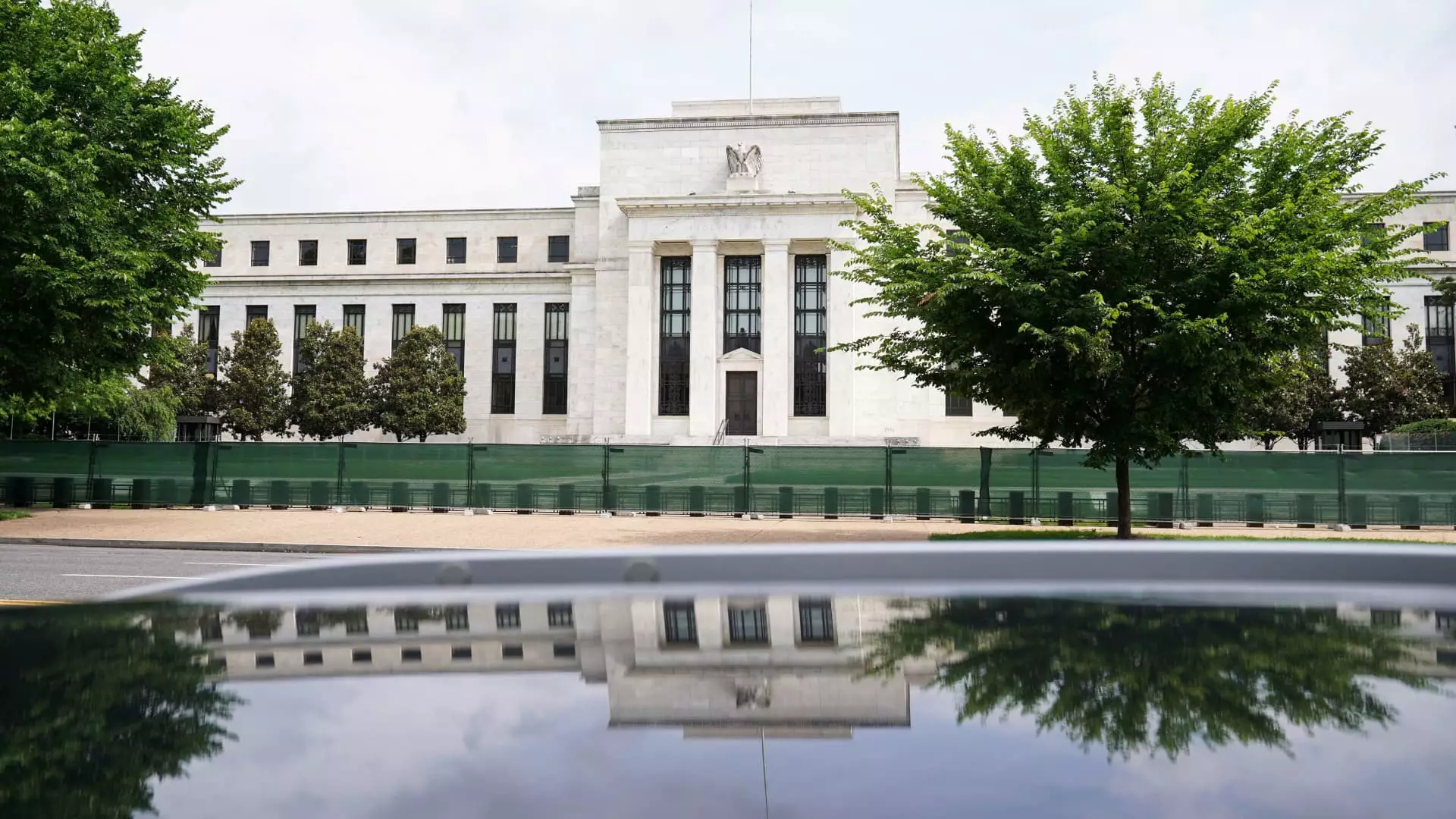When navigating the complexities of the U.S. economy, interest rates set by the Federal Reserve (the Fed) play a pivotal role. The anticipation surrounding the Fed’s forthcoming meeting, especially one set to occur on December 18, reflects broader economic sentiment. A reduction in the federal funds rate by a quarter point would represent the third consecutive cut, cumulatively lowering the rate by a full percentage point since September 2023. This article explores the implications of these adjustments and their varied effects on consumer borrowing and savings rates.
The Fed’s cautious approach comes on the heels of aggressive rate hikes intended to combat inflation, which recently reached levels not seen in 40 years. As these inflationary pressures ease, the Fed now contemplates a more gradual adjustment to interest rates. Jacob Channel, an economic analyst, suggests that the upcoming reduction may be the last for some time, especially considering uncertainties regarding fiscal policies under President Donald Trump’s impending second term. The Fed seems to be treading carefully, ready to reevaluate its strategy based on evolving economic conditions and political factors.
The key interest rate, known as the federal funds rate, determines how banks lend to each other overnight, and while consumers do not directly pay this rate, its fluctuations have a significant ripple effect on various borrowing costs, including those for credit cards, mortgages, and auto loans.
Adding context to the importance of the Fed’s actions, the anticipated quarter-point reduction would adjust the federal funds rate to a range of 4.25% to 4.50%. This change, while seemingly modest, has implications for consumer borrowing costs. Yet, not all types of loans respond uniformly to these changes. For instance, credit card rates, which are typically variable and tightly linked to the Fed’s decisions, have remained high even as the Fed’s rate cuts began. The average credit card interest has surged from 16.34% to around 20.25% since March 2022, marking a near historic peak. The slow response of credit card issuers to Fed rate decreases signifies an ongoing burden for consumers looking to ease their financial pressures.
Experts like Greg McBride from Bankrate emphasize that knowing how to manage credit card debt effectively is paramount in the current financial landscape. Transferring balances to a 0% interest card and prioritizing aggressive payment strategies can mitigate the lingering impact of high interest rates.
Fixed-rate mortgages, which compose the majority of home loans, remain largely insulated from immediate changes in the Fed’s policies. Consequently, the average 30-year mortgage rate, reported at approximately 6.67% in early December, has not fallen in alignment with the Fed’s rate cuts. Homeowners locked into fixed-rate mortgages will continue to pay their established rates unless they refinance or sell, indicating that future market fluctuations will significantly depend on broad economic conditions rather than direct Fed actions.
With mortgage rates that are still comparatively elevated, economic analysts predict ongoing volatility in the housing market. This unpredictability creates challenges for both buyers and sellers as the landscape shifts.
The auto loan market presents another scenario where consumers are feeling the pinch. The average rate for a five-year new car loan stands at around 7.59%, with rising vehicle prices exacerbating the affordability issue. As car prices hit record highs — averaging about $40,000 — the burdensome monthly payments become a point of concern. Although a decrease in interest rates could provide some relief, significant improvements are unlikely without a broader drop in vehicle prices.
Student Loans: A Mixed Bag
Student loan rates have a unique standing in the context of interest rate changes. Federal student loans generally carry fixed rates, meaning current borrowers will not see immediate benefits from expected Fed reductions. Nevertheless, for those with private loans, which may feature variable rates influenced by broader economic trends, chances exist for rate reductions when the Fed cuts rates. However, potential borrowers must tread carefully when considering refinancing options, as moving from federal to private loans entails a loss of protective measures such as deferments and loan forgiveness possibilities.
As the Federal Reserve prepares for potential adjustments to interest rates, the overarching narrative remains one of cautious optimism layered with underlying economic uncertainties. For consumers, understanding how these changes affect various forms of debt is integral for navigating financial decisions in the near future. While rate cuts could offer some respite, the realities of high consumer debt levels, housing market volatility, and rising auto prices remind us that solutions may require more than just a few percentage points in rate reductions. Awareness and strategic financial planning are essential for managing the impact of these economic shifts.

